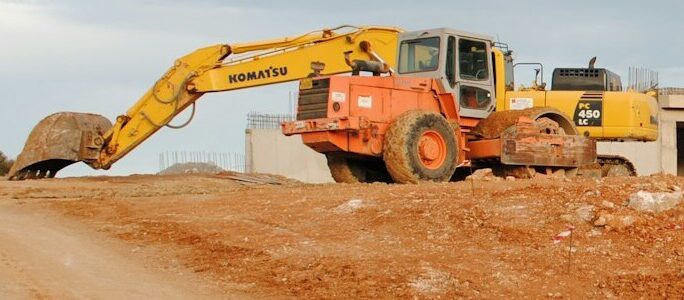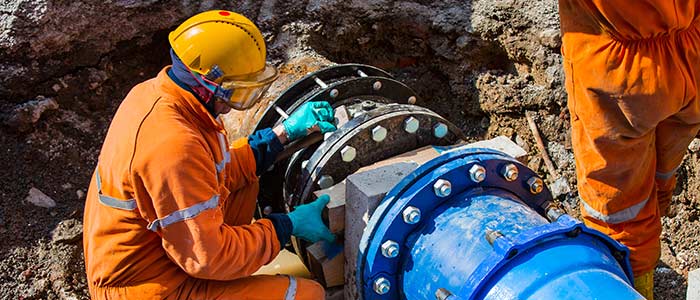Dashpivot Article – What is Excavation Safety?
What is Excavation Safety?
In this article, we answer the question, "What is Evacuation Safety?", discuss the consequences of poor evacuation practices, and provide a free and useful tool for making your team more excavation safety aware.

Why is Excavation Safety critical?
Excavation safety is critical because multiple hazards exist when you’re doing excavation works. Workers might just be digging a hole, but hazards like falling debris, gases, electrical/gas line strikes, soil collapses, and even fatal ones like cave-ins happen quickly and silently. With these extremely dangerous hazards, it’s hard to pull up each and every worker away from the hazardous and danger zones.
Essentially, the highlight of having excavation safety isn’t just to simply follow a set of rules and best practices, but the very core of those rules and practices – to protect the lives of the workers, and make sure the work stays on track without any incidents and tragedy.
Excavation safety regulations, and standards explained
The OSHA Trenching and Excavation standards cover all excavations and trenches made by humans on Earth and should follow the requirements laid out in the standards, which starts with employing a competent person who identify and classify the soil and rock deposits before starting excavation. This competent person, according to OSHA, has some of these tasks and responsibilities:
Classifying the soil & pre-planning: This includes being consistent on approaching new excavation jobs with the extra care and preparation – from bidding, to identifying the safety factors, determining the locations of utility installations, etc. It doesn’t matter how many successful excavations have been done in the past, what matters is how thorough they have been in preparing to avoid mistakes rather than correcting them.
Developing the protective systems: The protective systems as designed by OSHA primarily focuses on preventing cave-ins, which will be further discussed later in this article. OSHA has also stated how to properly and safely install them before work starts, and also how to remove them after work is done.
Conduct site inspections: This competent person is responsible for inspecting all of the excavations and its adjacent areas, and the protective systems in place on a regular (preferably daily) basis. If the competent person or the inspector finds that there are unsafe conditions in the area, workers must flee from the hazardous area until further safety precautions and instructions have been taken.
Here’s what the UK has implemented to prevent dangers from workers in excavations or excavation works – HSE Excavations.
The OSHA has created and implemented strict standards to make sure that excavation risks are not overlooked and that companies continue to implement these best practices and maintain optimal excavation safety during the excavation jobs in any type of site or soil condition. It is stressed that trench collapses or cave-ins are among the most serious and fatal hazards in excavation works, but what are cave-ins, and how can they be prevented?
Preventing Cave-Ins on the Jobs
Cave-ins during an excavation is the greatest risk that could happen and is actually more likely to occur than any other common excavation site dangers and hazards. Because cave-ins are often fatal incidents, regulations and industry best practices were specifically created to prevent them and protect workers on the job.
Think of it as similar to a large-scale shaky sandcastle with its walls crashing in on itself, where one cubic yard of soil almost weighs as much as a car – heavy, right? It happens really quickly too and whoever is within those walls will definitely either get buried or trapped, given that there are no safety measures to prevent cave-ins. With all that heavy weight on top of the trapped workers, it gets even harder to escape and get air for breathing.
There are key protective systems that workers and on-site personnel must do to prevent cave-ins during an excavation:
Don’t place heavy equipment and vehicles near the edge: It’s common sense, but sometimes people on site tend to forget that because it’s easier to have everything accessible and visible from within the vicinity. However, the more weight you put on the edges of a trench, all the more that very weight pushes down on the soil. And that’s worse when the soil is already fragile to begin with because of the excavation depth and other factors. When those edges collapse, it’s not just the very equipment and vehicles that fall over, it also includes the surrounding areas – it’s a dangerous domino effect.
Set back safe zones: In addition to avoiding putting weight on edges, this prevention method ensures that personnel and other equipment are placed at a certain distance away from the edge to make sure nothing and no one gets dragged along when the edges and the surroundings collapse. The solid rule of thumb is: if the trench is 5 meters deep, then set the safe zone at least 5 meters away from the edge. Don’t just set it via word of mouth, mark the safe zone/distance with barriers and warning lines, so no one drives or parks near the excavation site.
Cut the trench walls at an angle (slope) or with steps (benching): Instead of a cliff type of digging, cut at an angle or with steps to make the edges more stable and less likely to collapse. The goal is to avoid putting so much pressure on the walls that they collapse. Sloping is ideal for when there is a large space to slope the digs, but if there is not enough space, then benching is the second-best option you could go for.
Add supports along with sloping/benching: This is probably the safest and most practical option – to combine shoring (adding supports) along with sloping/benching. Shoring is installing supports like metal and timber right along the trench walls. It aids as additional support to keep the soil in place, like on one side you could be sloping and on the other side you’re shoring. A good combination would be that if the upper layers of the soil are firm enough, but the lower layers are loose, it’s best to slope the top and then shore the bottom. Two key things to remember is to (1) check in with the local safety standards that you follow to see whether mixing methods are allowable, and (2) have a professional conduct a site-specific soil analysis to determine the conditions of the soil, and then identify the mixed methods for support.
Conduct regular inspections when conditions change: It’s always a given to inspect the soil conditions after anything that affects it, like rain, heavy winds, soil movement, etc., including the walls, and all of the supports. If the weather and seasons change in the duration of the excavation job or changes are normal in the site location, it’s just better to be safe to inspect before workers go on about their days than to be sorry accidents occurred.
More dangers to be wary about are laid out in this article Excavation Hazards and Control Measures, including the appropriate control measures to lighten the risks.
Having this highly dangerous consequence of not following the standards, regulations, and guidelines, it should be more than enough to convince practicing excavation safety.
Excavation main safety tips
It doesn’t need to be further highlighted since across all local standards that you might be following, you would always need to have an excavation permit before any excavation works. It’s a requirement and should be fulfilled by the company which includes the permit period, permit expiry date, and most importantly, the scope of works. Include drawings, blueprints, sketches, or anything essential that clearly outlines the excavation work you’re about to do.
To learn more about what’s in an excavation permit, see this Excavation Permit Format and procedures
Keeping everyone (on-site personnel, crews, workers, and nearby establishments) safe during excavation practices should be one of the main priorities, which is why industry best practices have been followed since long before and are regularly updated whenever needed. Read on Excavation Safety Precautions to guide you how to stay alert all throughout the project, and even before conducting the works you should stay compliant with the requirements from the standards you follow by reading this Excavation Safety Requirements.

Use this safety talk form for free
Streamlining excavation safety with an editable digital excavation permit and more
We’ve covered the basics of excavation safety, what OSHA has to say about it, the most hazardous risk involved, and how to implement the best practices, but streamlining excavation safety through digital solutions can transform how teams collaborate and manage excavation safety itself.
With this digital Excavation Permit, you can ensure that permits are handled smoothly, sent over to the right signatories with annoying back and forth emails for approvals, and keep all essential information in the cloud. Whenever needed, you can take out your mobile device, or tablet and show the excavation permit.
Having a digital platform where you can auto-fill repetitive information such as company details, contractor details, and site address makes data entry so much easier. Create a list of all equipment used, if you’ve got hundreds of them, and even create your own list of employees and put that as a drop-down in your documents like this Excavation Safe Work Method Statement. Easily appoint persons-in-charge to keep excavation work safe and compliant.
Improving excavation oversight with modern strategies
Make information accessible, visible, structured, and actionable by using modern strategies.
You have real-time visibility over documents and reports like an Inspection Test Plan for Excavation and a Job Safety Analysis for Excavation, which means you’re able to report hazards, violations, delays, and other relevant updates faster, anytime, and anywhere remotely. Send over these documents directly from the site to your team members in the office, where they can view, edit, and comment on the very same documents you made kilometers away.
When you’ve got data stored in the cloud, you’re able to spot patterns, identify the recurring hazards, and easily adjust your company and safety protocols. To further add on that, you can relay these changes and newly identified risks to your workers on site by using this Toolbox Talk for Excavation Safety.
Improve excavation oversight by implement smarter and safer ways to manage your excavation works and keep all safety-related documents stored in a single platform.

Utility Service Locating template
Ensure better excavation & safety outcomes by doing the right investigative work.

Risk Assessment for Excavations template
Use this excavation risk assessment template to ensure you don't have any catastrophic excavation incidents.

Safe work method statement for excavation template
Excavation and trenching safety is mostly about practivity and good preparation. Bolster yours using this excavation SWMS for yourself.
